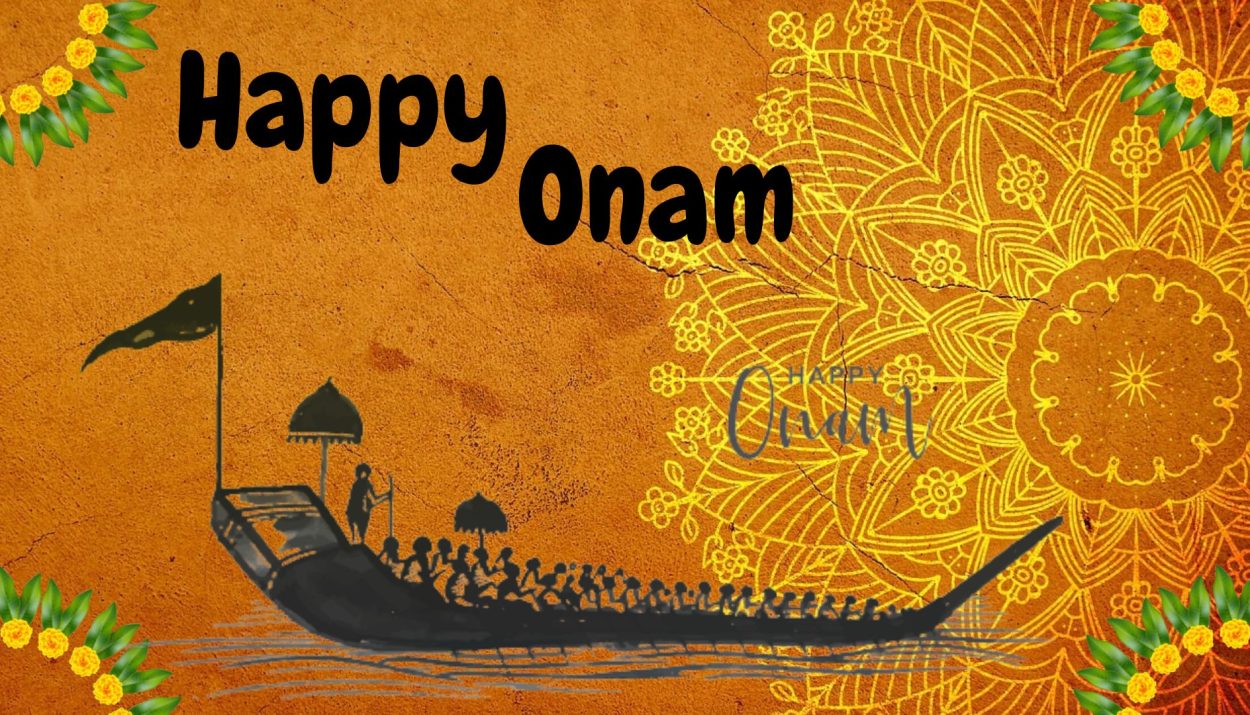India, a land of diverse cultures and traditions, boasts a rich tapestry of festivals, each with its unique significance and fervour. One such festival that stands out is Onam. The Vibrant Celebration of Onam brings together people from all walks of life to revel in the rich cultural tapestry of Kerala. Onam is not just a celebration; it’s an expression of Kerala’s rich cultural heritage and a moment of gratitude for the bountiful harvest.
The Origin of Onam
Onam’s roots can be traced back to ancient legends and mythology. The festival commemorates the Vamana (fifth avatar of Vishnu) and the subsequent homecoming of the mythical demon king Mahabali.
According to legend, Mahabali’s immense popularity and power aroused jealousy among the devas, leading them to conspire against his rule. Their plan involved sending Vamana, who assumed the guise of a dwarf Brahmin, to Earth. In this form, Vamana overpowered Mahabali, banishing him to the depths of the underworld, known as Patala.
When Vamana approached Mahabali, he humbly requested just three pieces of land as his boon from the benevolent king. When Vamana was granted his wish, he grew in size (Trivikrama) and with the first step of his foot, measured the whole earth. Then with the second step of his foot, he measured the whole sky. Vamana found no space to place his third step of foot. In a remarkable display of generosity, Mahabali (the grandson of the great devotee of Vishnu, Prahlada) offered his very own head as a resting place for Vamana’s third foot, thus fulfilling the wish.
Moved by Mahabali’s extraordinary act of selflessness, Vamana granted the king’s sole desire—to revisit his land and people once a year, during the festival of Onam. Thus, Onam became synonymous with his homecoming and the prosperity and joy it brought to the land.
The Onam Celebrations
Onam is a ten-day festival that usually falls in the Malayalam month of Chingam, which corresponds to August-September in the Gregorian calendar. The preparations for Onam start well in advance, with people cleaning and decorating their homes, creating intricate floral designs called “Pookkalam” in front of their houses, and shopping for new clothes. Both men and women choose to wear traditional clothing, while women opt for the famous Kasavu saree in its classic cream and gold design.
The festival officially begins with Atham, the first day, marked by the raising of the traditional flag at the Vamanamoorthy Thrikkakara temple in Kochi. Each day, until the tenth day, witnesses a unique celebration, including processions, traditional games, and cultural performances. The most captivating element of Onam is the grand feast called the “Onam Sadya,” a sumptuous spread of more than 20 dishes served on a banana leaf. This feast is a testament to the rich culinary heritage of Kerala and is enjoyed by people of all ages.
Pulikali, a traditional art form where performers paint themselves as tigers and leopards, and Thiruvathira Kali or Kaikottikali, a graceful dance performed by women, are some of the cultural highlights of Onam. The Vallam kali, or boat race, is another spectacle that draws crowds from far and wide. The Aranmula Boat Race, in particular, is world-famous for its unique snake boat design and the sheer enthusiasm of the rowers.
Read- Unveiling the Sunken City of Dwarka
The Significance of Onam
What sets Onam apart is its ability to unite people from various backgrounds and beliefs. Irrespective of caste, creed, or religion, Onam is celebrated with equal fervour across Kerala. It transcends the boundaries of divisions and fosters a sense of unity and community among the people.
One of the reasons for this unity is the legend of King Mahabali, who is revered by Keralites as a just and beloved ruler, regardless of his religious affiliation. The story of his annual homecoming symbolizes the idea that goodness transcends all boundaries and that Kerala’s people, despite their diversity, are one.
Beyond the grandeur of the celebrations and the unity it inspires, Onam holds a profound significance in the lives of Keralites. It’s a time to express gratitude for the bountiful harvest, a reminder of the importance of agriculture in Kerala’s economy. Moreover, it emphasizes the importance of family, as families come together to celebrate, exchange gifts, and share stories.
Conclusion
Onam, the festival of harvest and unity, is a testament to the rich cultural heritage of Kerala. It transcends religious and social boundaries to bring people together in a spirit of celebration, gratitude, and unity. As the grand feast is served, the colourful processions march through the streets, and the traditional art forms come to life, one can’t help but be captivated by the vibrancy and diversity of this remarkable festival. Onam truly embodies the essence of India’s cultural tapestry and stands as a shining example of unity in diversity.
References
Onam 2023: History, significance and celebrations of Kerala’s harvesting festival
